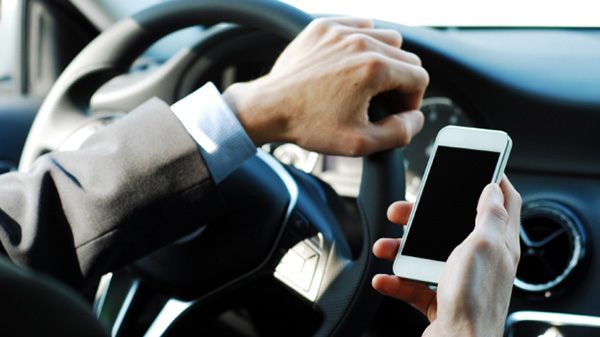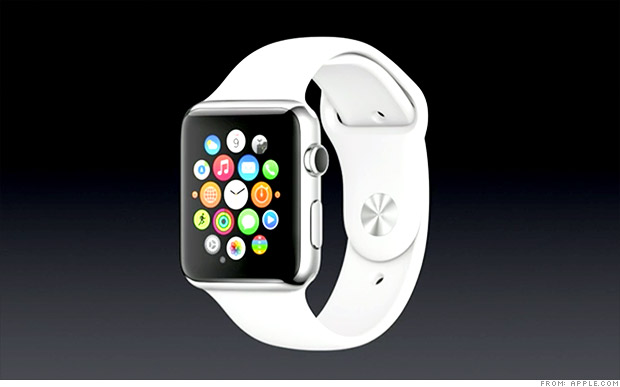5 deadly devices you shouldn’t use while driving
By Allie Johnson

Take your focus off the road for a second to read a text message, glance at a map tool or take a call, and you can cause a deadly crash.
Electronic devices — from cellphones to smartwatches to navigation systems — can lead to one or more types of driving distraction, says James Solomon, defensive driving expert for the National Safety Council (NSC), a nonprofit safety advocacy organization.
And distracted driving can kill: In 2013, more than 3,100 people died from crashes caused by a distracted driver, according to Distraction.gov.
What qualifies as distracted driving?
There are three main kinds of distraction that can take a driver’s attention off getting safely from point A to point B, Solomon says:
- Manual, in which you take one or both hands off the wheel — for example, holding a cellphone in one hand while you drive.
- Visual, in which you take your eyes off the road — for example, glancing down to read a text message.
- Cognitive, in which your mind is on something else — for example, discussing the details of a project with your boss.
Depending on the type of device, the user and the situation, using a device while driving can lead to one, two or all three types of distraction, Solomon says.
5 dangerous devices to use while driving
1. Cellphones.
There’s no way to know exactly how many crashes involve cellphone use, and the problem is being underreported, a report from the NSC shows.
However, the NSC estimates that cellphone use is a factor in 1 in every 4 crashes. In 2013, about 21 percent of crashes — 1.2 million — involved talking on a cellphone and another 6 percent — 341,000 — involved texting.
As of June 2015, 14 states and Washington, D.C., prohibit drivers from talking on hand-held cellphones, according to the Governors Highway Safety Association. And 46 states and D.C. have banned texting while driving.
2. Hands-free devices.
Hands-free devices have been touted as safe to use while driving, but studies show that’s not true, according to the Insurance Information Institute. For example, two 2014 studies done at the University of Utah found that using hands-free systems to text, tune the radio and do other tasks while driving is risky — though some systems are worse than others.
The study named Chevrolet’s MyLink system as most distracting, followed by Mercedes’ COMMAND system and Ford’s SYNC with MyFord Touch system. The study found Toyota’s Entune to be least distracting.
Drivers still have trouble focusing on driving while using hands-free systems, says University of Utah assistant professor Joel Cooper. In one study, University of Utah researchers had drivers navigate city streets in simulators while carrying on phone conversations, Cooper says.
The drivers later got quizzed and failed to recall about half the things they drove past. “It didn’t matter whether it was a garbage can or a kid on a bike,” he says.
3. Smartwatches.

Smartwatches are pretty new, so there’s no hard science on their effect on driving.
But one British newspaper reporter went to the U.K.’s Transport Research Laboratory to drive in a simulator while using a smartwatch and other devices. The result: While reading a message on a smartwatch, it took the driver 2.52 seconds to react to a hazard in the road, compared with 1.85 seconds while doing the same task on a cellphone.
In another simulator test, the driver veered out of his lane four times and swerved to avoid a crash with a semi truck while using a smartwatch.
4. Heads-up displays.
With heads-up displays, you don’t look down — but that doesn’t make them safe to use while driving, Solomon says. Heads-up displays, like Google Glass, are wearable devices that look like eyeglasses with a small screen in the corner. They allow users to read emails, check message notifications and do other tasks while looking straight ahead.
In fact, a 2014 University of Central Florida study, which used driving simulators, found that drivers texting with Google Glass took just as much time to react to a car stopping suddenly as drivers using smartphones did.
However, the study found Google Glass users did recover more quickly after near misses.
The problem: When you use a heads-up display, you’re engaging your short-range vision to see the screen in front of you, so you miss what’s going on farther ahead in the road, Solomon says.
5. Satellite navigation/map tools.
If you’re going to use a GPS or map tool, you should always program your destination before starting a trip, Solomon says. Once you’re on the road, don’t look at the map, he says. But even if you train yourself to keep your eyes on the road, you can still get surprised — and distracted — by the verbal directions.
In fact, a 2012 British study found that drivers listening to verbal instructions from a satellite navigation system drove faster, steered more erratically and were less likely to notice pedestrians stepping into the street.
“When you haven’t heard anything for 20 minutes and the voice suddenly tells you to take an exit in two miles, you get startled,” Solomon says.
This may not seem like much, but it doesn’t take much distraction to cause a crash, Solomon says. If you’re driving 60 mph on the highway, taking your attention away from the road for just one-tenth of a second can cause a head-on crash, he says.
The safest route is to avoid using devices while driving, Solomon says. “Drive like your life and others’ lives depend on it,” he says.
